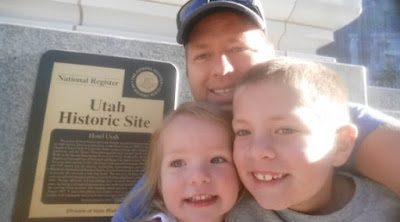Objective: Students will share what they know and communicate reactions through writing in a Journal.
Preparation/ Materials: each student should have a journal/ or history notebook. Teachers must be able to post quotes, and pictures on the board.
Instruction: Explain to the students that at the beginning of each class period they will be given about five minutes to write in their history journal a reaction from a question, quotes or photographs. On Fridays instead of a writing prompt they will need to share current events. writing should be a full paragraph with complete sentences, points will not be given for poor or incomplete sentences. The goal is improvement over the weeks and months students should show continues improvement in writing and higher level critical thinking.
Conclusion: At the end of the unit have students revisit their journal entries and see if any of their opinions have changed.Have the students write how their opinions have or not.
This is a list of Quotes, Questions and Pictures that pertain to the Gilded Age:
Indian Wars
"From where the sun now stands, I will fight no more forever."
Nez Perce Indian Chief Joseph.
Rail Road
“If you have to pay money to have the right thing done, it is only just and fair to do it. If a man has the power to do great evil and won’t do right unless he is bribed to do it…it is a man’s duty to go up and bribe the judge.”
- Collis P. Huntington, Southern Pacific Railroad Agent
Industrial Issues
“It really seems hard when we look back upon what we have done…that we should feel compelled to fight
for our lives against political adventurers who have never done anything but pose and draw a salary.”
-Joseph Wharton, Industrialist (nickel & steel)
“Fellow workers. ... This is the Continental Congress of the working-class. We are here to confederate the workers of this country into a working-class movement that shall have for its purpose the emancipation of the working-class from the slave bondage of capitalism. ... The aims and objects of this organization shall be to put the working-class in possession of the economic power, the means of life, in control of the machinery of production and distribution, without regard to the capitalist masters.”
-“Big” Bill Haywood, IWW organizer (1905)
“ANARCHISM:--The philosophy of a new social order based on liberty unrestricted by man-made law; the theory that all forms of government rest on violence, and are therefore wrong and harmful, as well as pointless.
If not for the spirit of rebellion, of the defiance on the part of the American revolutionary fathers, their posterity would still wear the King's coat. If not for the direct action of a John Brown and his comrades, America would still trade in the flesh of the black man. True, the trade in white flesh is still going on; but that, too, will have to be abolished by direct action. Trade-unionism, the economic arena of the modern gladiator, owes its existence to direct action.
Will it not lead to a revolution? Indeed, it will. No real social change has ever come about without a revolution. People are either not familiar with their history, or they have not yet learned that revolution is but thought carried into action.”
-Emma Goldman (1910)
“Men may die but the fabrics of free institutions remain unshaken."
Chester Arthur
"So long as all the increased wealth which modern progress brings goes but to build up great fortunes, to increase luxury and make sharper the contrast between the House of Have and the House of Want, progress is not real and cannot be permanent."
"Progress and Poverty," Henry George,
Immigration
"Give me your tired, your poor,
Your huddled masses yearning to breathe free,
The wretched refuse of your teaming shore.
Send these, the homeless, tempest-tost to me,
I lift my lamp beside the golden door."
Emma Lazarus in 1883
“Every immigrant who comes here should be required within five years to learn English or leave the country.”
Politics
"I want it understood that I am the grandson of nobody, I believe that every man should stand on his own merit." Benjamin Harrison
“I am an American; free born and free bred, where I acknowledge no man as my superior, except for his own worth, or as my inferior, except for his own demerit.”
― Theodore Roosevelt
“Speak softly and carry a big stick; you will go far.”
―Theodore Roosevelt
“Keep your eyes on the stars, and your feet on the ground.”
― Theodore Roosevelt
“Nothing in the world is worth having or worth doing unless it means effort, pain, difficulty… I have never in my life envied a human being who led an easy life. I have envied a great many people who led difficult lives and led them well.”
― Theodore Roosevelt
“Far better it is to dare mighty things, to win glorious triumphs, even though checkered by failure, than to take rank with those poor spirits who neither enjoy much nor suffer much, because they live in the gray twilight that knows neither victory nor defeat.”
―Theodore Roosevelt
“Here is your country. Cherish these natural wonders, cherish the natural resources, cherish the history and romance as a sacred heritage, for your children and your children's children. Do not let selfish men or greedy interests skin your country of its beauty, its riches or its romance.”
― Theodore Roosevelt
















.jpg)




















